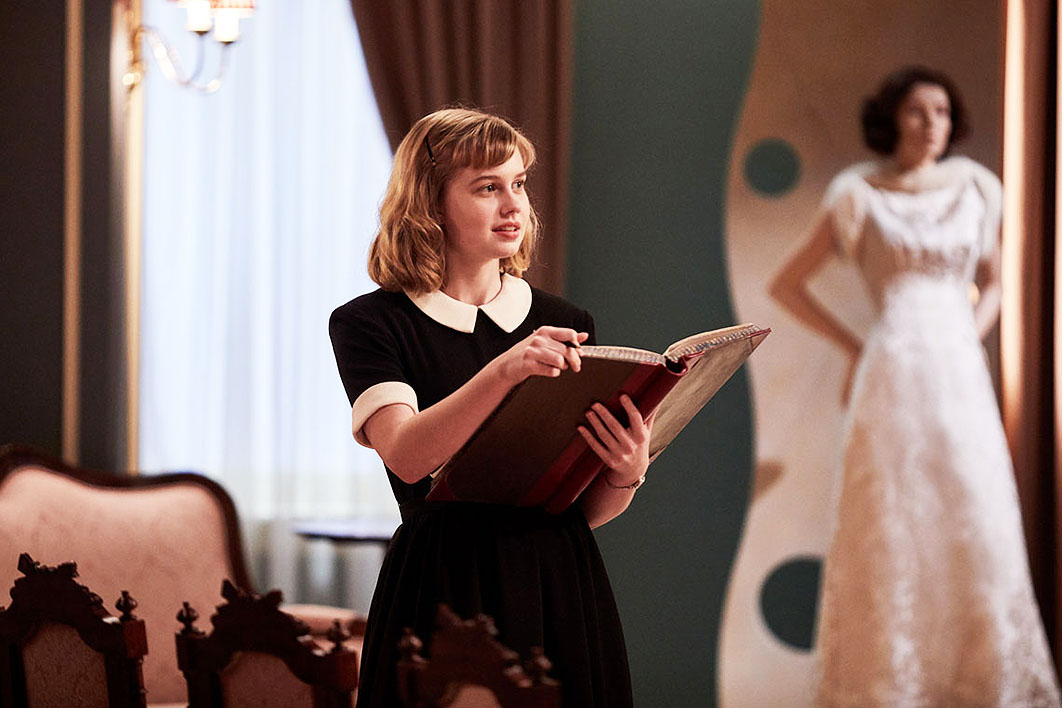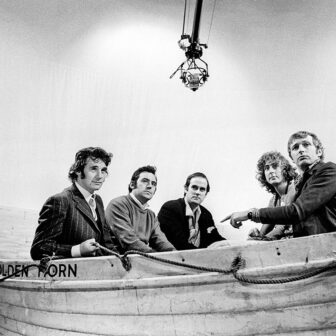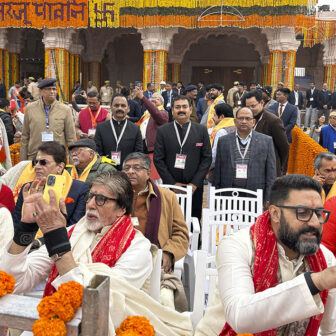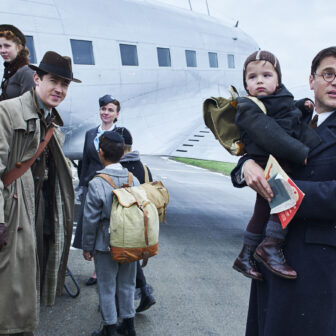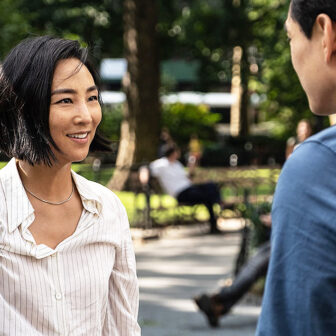Two films, screening now, in very different registers: the light and the dark.
Lightness first. Ladies in Black, Bruce Beresford’s new film, is a charmer, a glimpse of the lives of a group of Australian women on the cusp of the sixties, as postwar prosperity began to open doors to immigrants and a new generation of young Australians. It was again a time of possibilities.
When sixteen-year-old Lisa (Angourie Rice) takes a summer job in the frock department of Goodes Department Store she is about to learn many things. It’s her first venture into a world beyond school and family, and she is avid. She is in the company of the formidable women in black who epitomise the store.
So many lessons. She must learn how to dress, how to speak to customers, how to soothe their egos. She must learn the pecking order among the women.
Lisa was christened Lesley but she hates her name. Lisa is how she thinks of herself and Lisa she becomes. She learns fast. She is a watcher, a thinker and a reader. She wants to go to university, though her father has yet to be persuaded. She thinks maybe she will be a poet. Or write plays. This is not an ambition familiar to many of the ladies in black. Even the fact that she is waiting for her leaving certificate results singles her out for startled comment.
But Lisa makes a friend, Fay, and then finds a mentor. To some jealousy, she is seconded from Cocktail Frocks to Model Gowns, a glowing oyster-coloured cave where wealthy women buy creations from Paris and London way beyond the reach of most. Model Gowns is presided over by Magda (Julia Ormond), a Slovenian émigré who has a pungent take on Australian culture and its shortcomings, but also warmth and an appreciation of what Australia has offered war-scarred Europeans. Magda is imperious and worldly. She sees the possibilities in Lisa.
This is an ensemble film. While Lisa and Magda are at the heart of it, over the course of that summer we also come to know Fay (Rachael Taylor) and Patty (Alison McGirr). Both are yearning and both are struggling with the shortcomings of Australian men at the time, with their sexual ignorance and their inability to speak to women or register feelings. Men who don’t see the point in girls going to university. At home, we see wives in their separate domains manipulate their way round husbands’ prejudices. Women’s Liberation was yet to come, but these were early stirrings. “Just let him be for a bit,” says Lisa’s mother as they consider how to get Mr Miles (Shane Jacobson) to sign the Commonwealth Scholarship application form. “We’ll pick our time.”
Bruce Beresford has a knack for making optimistic or life-affirming films (Tender Mercies, Crimes of the Heart, Mao’s Last Dancer). Ladies in Black is made in a much warmer register, but one reason it sings is that Madeleine St John, who wrote her novel The Women in Black in the 1990s, had a pitch-perfect ear for dialogue. Much of it is in the film: it was, according to Beresford, the easiest adaptation he ever made.
It’s also beautifully cast. Susie Porter as Lisa’s mum and Noni Hazlehurst as Miss Cartwright both bring enormous empathy to their roles, while Ryan Corr and Vincent Perez add convincing émigré gloss. Most touching is Luke Pegler as Frank, a man ashamed of his desire.
I’m at odds with the reaction of a critic I respect — Christos Tsiolkas — who felt the film lacked a darker register, particularly in its treatment of the experiences of immigrants at the time. This is not the film about the immigrant experience of the Melbourne poet Pi O, for example, whose Greek-born mother sat arguing with the television in broken English. Nor of Tsiolkas’s own family, as expressed through his writing. These would be different movies. It evokes a time I knew, and a place I knew, to near perfection.
Ladies in Black is more than a frothy confection. It is shrewd. Class differences are registered pointedly in the film, as is a widespread distrust of immigrants. It doesn’t hammer these attitudes, but they are there, and part of Lisa’s getting of wisdom is to reject them.
For those looking for a sharper take on women’s experiences before the second wave of feminism, may I recommend Dymphna Cusack and Florence James’s 1951 novel Come in Spinner? This too is set in a hermetically sealed “women’s world” — a beauty salon in a posh city hotel (a thinly disguised Hotel Australia) during wartime. For many women, there was not such a huge distance between Sydney in 1945 and Sydney in 1959.
This Beresford film is also a salute to Sydney in all its summer sparkle, to light glinting on the harbour, to ferries and trams and thankfulness we weren’t in Melbourne. There’s a welcome place, I think, for films that permit audiences to leave feeling happy and evoke a time when we could.
Now the darkness. Custody (Jusqu’à la garde) begins at a judicial hearing with two lawyers arguing a contested custody case, the parents sitting tensely beside them.
At issue is access to a ten-year-old boy, Julien (Thomas Gioria). He doesn’t want any contact with his father, as a statement tendered by the mother’s lawyer makes quite clear. Neither does his older sister, Joséphine (Mathilde Auneveux). Doubt is cast on an affidavit from the school nurse who recalls seeing bruising on Joséphine. The parties agree that the daughter, who is almost eighteen, can make up her own mind.
The mother, Miriam (Léa Drucker), has moved house and changed her phone number to protect herself and her children. She has never reported violence but her lawyer maintains that the father, Antoine (Denis Ménochet), has been stalking and harassing her.
Miriam sits stiffly throughout the hearing, saying little until she is questioned. Antoine, a big, burly man, has left his job and moved to a new house to be near his children. A son has the right to know his father, he insists, and he believes that the mother has turned his son against him.
This is wrenchingly familiar. And yet something seems not quite right during this fifteen-minute sequence. We are put in the position of the judge, and we wonder why. Why didn’t the mother report threats and assaults? Whom should we believe?
In the long second act of the film we see Antoine in action. He is simmering. The judge has upheld his right to access, though not to know where the family lives. When he collects Julien from an agreed location, we can read the boy’s dread in the slump of his shoulders, the way he tries to deflect his father’s questions, the desperate little lies he tells in an effort to protect his mother. It builds to a terrifying third act.
Xavier Legrand based this first feature on interviews with many women and children. He made it as a sequel to his 2013 short film, Just Before Losing Everything (Avant que de tout perdre), which followed the mother as she prepared to leave her husband.
The statistics are appalling: a woman is killed by her husband every week in Australia. In France, says Legrand, that figure is three. Beyond the awful, patriarchal murders is the ongoing damage to the victims. We have begun to hear from the women, but the damage to children is less explored.
These interviews convinced Legrand that the film’s focus should be on the children. He has done it simply, and well. There is sufficient in the glimpses we have of Antoine with Julien at the meal table, of Miriam as she tries to focus her daughter on her final exams, to suggest the long-term consequences of domestic bullying. The film is framed by a glimpse of the judge in very early morning light, wearily gathering papers in her chambers and walking the corridors to the hearing, and by a concerned neighbour calling the police and peering through her door. These are the protections the community offers, and they are not enough.
Custody is an exemplary film, and its M classification may serve as a trigger warning. Despite its raw subject matter, the screening I attended was packed. Watching the faces of older women as we left the screening, I wondered how many of them were recalling, as I was, childhood trauma. We didn’t speak of such things then. Now we must. •
